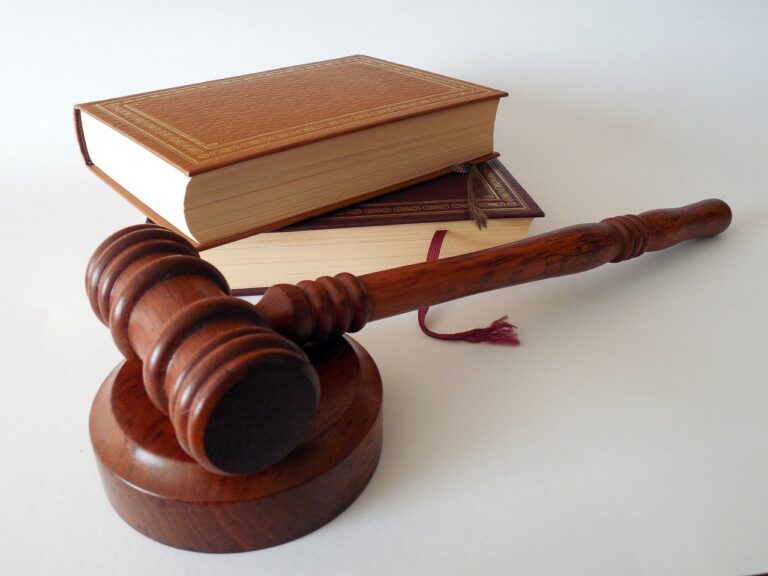
What is Tort Law? An Introduction to Civil Wrongs and Liability
With so many different legal terms flying around, there is so much to demystify when it comes to an aspect of civil law known as tort law. If you’ve ever wondered what is a tort law, its purpose, and its objectives, let’s show you what you need to know.
Table of Contents
What is Tort Law?
A tort is an integral part of the legal system and is the area of the law that covers civil suits. Generally speaking, any claim that arises in a civil court falls under tort law. The concept of a tort law is to redress any wrongful act done to someone, providing relief from the wrongful acts of other people. This usually involves awarding compensation, such as monetary damages.
The origins of tort law can be traced a long way back to ancient legal structures. For example, in Roman law, there were concepts of law that allowed people to seek compensation for wrongful acts. In fact, the term “tort” actually comes from the Latin word “tortum,” which means a wrong or an injustice. Tort law in the United States has, over time, adapted and expanded upon these principles and meets the needs of those looking for compensation arising from unlawful acts.
One of the key distinctions of tort law is that it focuses on civil matters as opposed to criminal ones. Criminal law relates to offenses against the state; tort law deals with offenses against entities or individuals.
What is the Purpose of Tort Law?
The main purpose of tort law is to provide people with a means to seek justice and compensation if they have been wronged. The objective can be broken down into a number of specific purposes:
Compensation
The victims of any “civil wrong” should receive compensation for the harm they have suffered. These types of compensation can cover different forms, for example, lost wages, medical expenses, and even non-economic damages such as pain and suffering.
Deterrence
Tort law is a powerful deterrent against wrongful or negligent conduct. If an individual or entity (such as a company) knows they are legally and/or financially responsible for their actions, they are more likely to exercise due diligence or caution in their behavior going forward, which will prevent future harmful acts.
Correction
Tort law aims to correct injustices by holding wrongdoers accountable for their actions. This also provides a sense of closure and justice to those victims.
Prevention
Tort law addresses and resolves disputes through the legal system to prevent individuals from resorting to other unlawful or unhelpful means, such as vigilantism.
The Types of Tort Law
Tort law is diverse and covers different types of torts that come with their own unique characteristics and legal standards. Tort can be split into three different categories:
Negligent Torts
Negligence is perhaps the most common type of tort and involves cases where one party’s failure to exercise a certain level of care, typically defined as a reasonable standard of care, results in harm to another party. Negligent torts can be found in a variety of contexts, including:
- Car accidents or automobile accidents, when a driver causes an accident because of inattentiveness or recklessness.
- Product liability, when manufacturers create defective products that cause harm and can lead to product liability claims because manufacturers and/or providers have not followed their duty to create safe products.
- Premises liability, where property owners have a duty to maintain safe premises, either in an office environment or in a public setting, which can result in injuries like slips and falls.
- Medical malpractice, when a healthcare professional does not meet the standard of care, resulting in harm or, in severe circumstances, the death of a patient.
Intentional Torts
An intentional tort is the harm caused by the willful misconduct of another. This type of tort requires an element of intent. Some examples include:
- Defamation, when a false statement can harm someone’s reputation, either in written form (commonly referred to as libel) or spoken form (known as slander).
- False imprisonment, which involves the unlawful restraint of an individual’s freedom of movement.
- Assault, which refers to the threat of harmful contact.
- Battery, which comprises actual physical harm caused on purpose.
Strict Liability
Strict liability torts are not concerned with the culpability of the individual doing the harm but focus on the act itself. If an entity or an individual commits a certain act, such as creating a defective product that harms a consumer, the manufacturer or person who created it is responsible for the damage done and can be held strictly liable, whether they were negligent or not.
While these are the three main categories, there is also a fourth, which is a nuisance tort, which deals with interference with someone’s use or enjoyment of property, for example, noise pollution or other disturbances, and these cases commonly revolve around disputes between businesses or neighbors.
Common Examples of Tort Law
Negligence
A common example of negligence in tort law is when a restaurant owner does not clean properly. If the restaurant owner fails to clean this up, either by themselves or by delegating the responsibility, the injured party can file a negligence claim against the restaurant owner. The claimant can seek compensation for a number of components, including pain and suffering, lost wages, and medical bills.
Other examples of negligence can include a company’s part in causing wrongful death. For example, in 2007, the company Quest Diagnostics and its subsidiary Athena Diagnostics faced a negligence lawsuit by Amy Williams for the wrongful death of her two-year-old son. Because Athena Diagnostics misclassified a mutation in her son’s gene, which directly resulted in a seizure and his death, it was argued that the misclassification meant the doctors used the wrong treatment for his symptoms.
Intentional Torts
A notable example of an intentional tort would be when somebody spreads false rumors about a competitor in business, damaging their reputation and causing financial harm. The victim of these rumors can pursue a defamation lawsuit so they can seek damages for the harm caused by this act.
You would tend to see this type of tort case associated with celebrities. For example, the pro wrestler Hulk Hogan was awarded $140 million in damages as it was deemed the website Gawker invaded his privacy on purpose to obtain video evidence of a private act.
Strict Liability
There are many examples of strict liabilities. For example, if a defective car airbag caused injuries to somebody during a collision, the victim could hold the manufacturer liable for their injuries, regardless of whether the manufacturer was negligent or not.
In 2016, a self-driving car made by Google sensed a group of sandbags positioned around a storm drain and swerved into another lane, hitting the side of a public transit bus in Mountain View, California. This was the first reported case of a self-driving car causing an accident. As per liability tort law, drivers can seek compensation from a manufacturer for a faulty part of a car, but this liability now extends to self-driving cars, meaning that Google and other providers of self-driving cars would be liable.
Tort Law vs. Civil Law
Although tort law falls under the umbrella of civil law, tort law actually has distinct characteristics that set it apart.
Civil law involves a wide range of legal matters, for example, property disputes, family law problems, or contract disputes, that involve a cascade of legal principles and procedures depending on the respective areas.
Tort law is a finely focused component of civil law that addresses cases where one party alleges harm or injury caused by the actions or negligence of another specific party, which can manifest in property damage, physical injuries, reputational damage, or emotional distress.
Tort law broadly refers to the deliberately committed wrongful actions, referred to as “civil wrongs” that infringe on the rights of others. Tort law relates to civil cases where the filing party is seeking compensation for damages caused by someone or something else.
The Definition of Tort Law
The term “tort” refers to deliberately committed wrongful actions (the aforementioned “civil wrongs”) that infringe on the rights of others.
Torts have various forms of negligent wrongs, including manufacturing or design errors, deliberate emotional harm, assault and battery, legal or medical malpractice, misleading product marketing, sale of defective products, slander, and libel.
A tort can be defined as the legal framework that governs cases involving civil wrongs or harm caused by one party to another and encompasses a diverse range of torts with unique characteristics and legal standards.
Objectives of Tort Law
Compensation
One of the main objectives of tort law is to ensure that those who have suffered harm or injury receive fair and just compensation for their losses, including:
- Economic damages, such as medical expenses, lost wages, or property damage, restoring the injured party to the financial position they were in prior to the harm occurring.
- Non-economic damages, such as emotional distress, pain and suffering, or mental anguish, that acknowledge and compensate for the emotional toll of the injury.
- Punitive damages, which may be awarded to punish the wrongdoer or deter similar conduct in the future with the goal of sending a strong message about the severity of the wrongdoing.
Deterrence
A crucial objective is to hold individuals and entities accountable for their actions to deter any negligent or wrongful conduct. When somebody understands that their actions can lead to legal liability or financial repercussions, they will, in theory, conduct greater due diligence and caution. Deterrence can be divided into two key forms:
- Specific deterrence, which deters the wrongdoer in a particular case from repeating similar actions in the future.
- General deterrence, which seeks to discourage other individuals and entities from engaging in similar conduct by showcasing the consequences faced by the wrongdoer in a specific case.
Correction
When a civil wrong occurs, it creates an imbalance that must be rectified. Tort law holds the wrongdoer accountable, ensuring they take responsibility for their actions to aim to restore the injured party to a state of wholeness by providing them with the appropriate remedies or compensation, also known as restitution.
By addressing the underlying issues and holding the wrongdoer to account, this prevents the recurrence of incidents in the future. Finally, this helps to maintain trust and confidence within the legal system by correcting injustices and holding entities or individuals accountable.
Liability in the Law of Tort
Liability refers to the legal responsibility of a party for the harm or injury they’ve caused to another. Liability can be attributed depending on the specific circumstances of the case in accordance with various principles, and these include:
Negligence
This is often the basis for establishing liability. To prove negligence, it needs to be established that a defendant must have owed a duty of care to the plaintiff, breached their duty of care, and the plaintiff must establish a causal connection between the defendant’s breach of duty and the harm suffered, ultimately demonstrating that they suffered actual damages, whether non-economic, economic, or both.
Intentional Torts
In intentional torts, liability needs to be established by demonstrating that the defendant intentionally engaged in wrongful conduct. Intent is the crucial element because if it can be proven that the defendant acted with the intent to cause harm or knew that harm would occur, this establishes liability.
Strict Liability
Strict liability holds a party responsible for harm if there was no intent to cause harm or negligence involved.
Conclusion
Tort law is a multifaceted part of law that plays a critical role in addressing civil wrongs and providing solutions for those who have suffered harm. Tort law guarantees justice and fairness by compensating victims, deterring wrongful conduct, and preventing chaos within society. If you have found yourself on the receiving end of injustice or unfairness, we can help you.
The Florida Tort Reform Act 2023, also known as HB-837, came into action in March 2023 and introduced substantial changes to personal injury cases. One of the most notable changes is the reduction of Florida’s Statute of Limitations for negligence lawsuits, which has cut plaintiffs’ time to file a suit in half, giving most victims two years from the date of an injury or accident to bring about a lawsuit. If you wait too long, you may not be able to file a case. Therefore, you should reach out to the Law Office of Cary Woods II right away to seek the justice you deserve.





